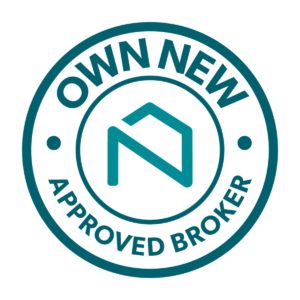Switching to a Buy to Let Mortgage

If you have a residential mortgage and are seeking to rent out your property you will need to switch to a Buy to Let mortgage. Switching from a residential mortgage to a Buy to Let mortgage can be challenging, especially if you do not hold much equity in your property.
The good news is there are steps you can take to make switching to a Buy to Let mortgage much simpler. Most lenders are happy to arrange the switch to a Buy to Let mortgage and with an expert mortgage broker you may be able to achieve this goal with relative ease.
Let’s examine what you need to do to switch to a Buy to Let mortgage.
What is a Buy to Let Mortgage?
A Buy to Let mortgage is a mortgage product specifically designed to allow you to rent your property. Most Buy to Let mortgages are interest-only however there are repayment Buy to Let mortgage products or ‘hybrid’ mortgage products that allow for a full interest payment and a partial capital repayment.
Most landlords prefer interest-only Buy to Let mortgages as it reduces their monthly outgoings to a minimum and allows them to make profit from rent.
If you want to switch to a Buy to Let mortgage, you will need to pass a lender’s rental stress test which checks your interest payments are less than the rental income you can generate.
You can also make capital payments or overpayments on most Buy to Let mortgages. However, this can prove costly as some lenders operate Early Repayment Charges (ERCs).
Switching from a Residential to a Buy to Let Mortgage
A residential mortgage is a repayment mortgage, meaning you will be paying both the capital and the interest on the loan. Each month you make your mortgage payment you own slightly more equity in the property until the loan is paid in full and you own the property outright.
A Buy to Let mortgage is typically an interest only mortgage and at the end of the mortgage the capital will be outstanding in most cases. Because Buy to Lets are usually interest-only products, you will need to show your lender a credible way of repaying the outstanding capital at the end of the mortgage.
This is known as a ‘repayment vehicle’ and a common way of achieving this repayment is to sell the property. If you are switching your residential mortgage to a Buy to Let mortgage with the view to own the property at the end of the mortgage you will need to do one of the following:
- Have an alternative repayment vehicle such as investments or savings to
cover the capital - Look at a repayment Buy to Let or Hybrid Buy to Let product
When you secured your residential mortgage you put a deposit down. A typical deposit for a residential mortgage is at least 5% of the purchase price. Whereas a typical deposit for a Buy to Let mortgage is at least 20%.
Cost of Changing to a Buy to Let Mortgage
Providing you use a fee free broker, like Boon Brokers, you should not incur a mortgage broker fee when you switch to a buy to let mortgage.
Lenders charge an arrangement fee which you can opt to add to the loan or pay up front. Arrangement fees vary between lenders so you should ask your broker how much the fee will be for your chosen lender (this will be outlined clearly in paperwork provided as well).
Your new lender will likely request a valuation and mortgage survey to check the property meets their requirements. If you are switching mortgages with the same lender this may not be applicable.
From a legal aspect, no conveyancing will be required as the deeds for the property will already be in your name. However, a solicitor will still be required if you are changing lenders as one property charge will need to be replaced with another.
Free consultations are available in the UK.
Get Started NowEligibility Criteria
To be eligible for a Buy to Let mortgage you will need to have a suitable deposit and must demonstrate that the rental income for the property is more than enough to cover the interest payment.
For repayment Buy to Let mortgages and Hybrid products your anticipated rental income will need to be higher to cover the additional capital aspect of the mortgage. The lender is also likely to scrutinise your income and financial commitments more for repayment or hybrid mortgages. You will need to pass a lender’s credit score threshold.
Rental Income
Lately rental incomes have been scrutinised by lenders especially in Scotland where rent freezes are in place amid rising mortgage interest rates.
As a result, landlords are finding their profit margin eaten into or completely eroded. Lenders are increasingly concerned with rental incomes and stress tests for Buy to Let mortgages are becoming stricter.
You will need to pass this stress test and show your rental income exceeds the monthly mortgage payment by a good margin.
Credit Scoring
All mortgage products undergo a credit scoring process. In most cases you will be credit scored twice, the first at Decision in Principle stage and the second upon a full mortgage application.
Having a poor credit score does not prevent you from obtaining a Buy to Let mortgage, although it will likely result in a higher interest rate to reflect the risk to the lender. Because Buy to Let mortgages have higher deposit requirements lenders are often more lenient on credit scoring compared to residential mortgages.
How Much Deposit Do I Need for a Buy to Let Mortgage
You will need to provide a minimum deposit of 20% for a Buy to Let mortgage. However, realistically in the current market, many lenders require 25% as a minimum deposit of the purchase price.
Equity for Deposit
This deposit can be the existing equity that you hold in the property. It is quite common for those switching from a residential mortgage to a Buy to Let mortgage to use equity as a deposit. If your residential mortgage was arranged recently or you don’t have at least 20% equity, you will need to provide an additional down payment to make up the lender’s deposit requirement.
Source of Deposit
Additional deposit amounts needed to add to any existing equity you hold must come from a verified source such as savings or investment income. This is part of a lender’s Anti-Money Laundering (AML) check to ensure your deposit has been acquired legally and is suitable for a mortgage.
Gifted deposits are accepted on the proviso whoever gifts the deposit signs a declaration waiving all rights to that money – essentially stating it is expressly a gift of money to you.
Aside from the rental income stress test, finding an adequate deposit can be the biggest challenge when obtaining a Buy to Let mortgage.Your mortgage broker will be able to detail the deposit requirements for your preferred lender and outline what types of deposit are accepted.
What Our Clients Have To Say
Restrictions on Buy to Let Mortgages
There are a number of restrictions on Buy to Let mortgages that can make them prohibitive in some circumstances.
- A Buy to Let mortgage (for business use) is unregulated and you will not have the same regulatory protections from the Financial Conduct Authority (FCA) and the Financial Ombudsman as you would with a residential mortgage
- You will not be able to reside at the property, the product is designed for landlords who have tenants in the property
- In nearly all cases a Buy to Let mortgage will be interest-only. At the end of the mortgage, you will need to repay the capital in full
- Adherence to legislation when you are a landlord
Unregulated Product and Lack of Consumer Protection
The FCA issues strict guidelines for residential mortgage products and offers customers protections, especially with the processes a lender must follow to repossess a property.
If a residential mortgage is mis-sold you can first make a complaint to your lender and if the response is unsatisfactory, escalate it to the Financial Ombudsman.
The Financial Ombudsman will then assess the complaint in line with the FCA guidelines and can award substantial compensation if a lender is at fault.
Buy to Let mortgages have none of this regulatory protection and as such, lenders can act in their business interests even if it seems unfair or is detrimental to you.
You Are Unable to Live in a Property with a Buy to Let Mortgage
It should be no surprise that some residential property owners wish to switch to a Buy to Let mortgage to reduce the monthly mortgage payment.
However, lenders stipulate you must vacate the property and have tenants residing there. If you reside in a property that has a Buy to Let mortgage, with no consent for you to reside there from the lender, you are committing mortgage fraud.
Lenders do occasionally check their Buy to Let mortgage book and ensure properties are being used in the way the product is designed for. If they find you residing in the property and in breach of the contract, they are within their rights to terminate the mortgage and request you pay the sum in full.
If you fail to repay the loan at that point, they will start the repossession process.As mentioned above, you will not have the usual protections in place for a Buy to Let repossession.
In 2022, the number of Buy to Let repossessions increased and lenders are quick to act to prevent business losses.
Repayment Vehicles and Buy to Let Mortgages
The most likely outcome of a Buy to Let mortgage expiry is that the property is sold to repay the capital. Many landlords find this arrangement beneficial. Over time, property prices tend to increase so when the property is sold, they pocket the difference between the mortgage and the property value.
If you wish to keep the property you will need to demonstrate you have a suitable repayment vehicle. If you are using savings, you may need to show a lender that your savings are sufficient to cover the cost of the capital or that overtime you can realistically achieve the interest rate to grow your savings to that level.
With investment repayment vehicles there is a greater level of risk to lenders, and they will scrutinise your investment to see if it can realistically achieve the capital repayment.
It is important to distinguish the terms realistically and theoretically in this scenario. Theoretically, any investment might grow and reach a value to repay the capital. A lender wants a more concrete assurance with investment accounts with expected minimum returns and projections that clearly demonstrate the capital repayment is possible.
As you can imagine, investments are inherently risky and you can lose all of your money when making any investment. Your chosen lender may not accept investment repayment vehicles for this reason and stipulate you provide another way to repay the capital.
Adherence to Landlord Legislation
When you leave the relatively safe confines of a residential mortgage and switch to a Buy to Let mortgage you take on the responsibility of following legal requirements.
There are many forms of legislation for landlords including health and safety, eviction practices and responsibilities to your tenant.
With a residential property, if any aspect of the property falls into disrepair you can repair the problem at your leisure. With a Buy to Let property, a tenant can legally force you to conduct necessary repairs.
This brings us onto the last drawback of being a Buy to Let landlord, you will almost certainly have additional ongoing property maintenance costs that can at times cost more than your rental income.
It is recommended you have an emergency pot of money to cover such eventualities to cover both the ongoing property costs and the mortgage payments.
Speak to a Mortgage Specialist
Switching to a Buy to Let mortgage is a decision that carries a lot of weight. The process should be straightforward with a specialist mortgage broker, as long as the property meets rental and equity criteria, but the decision itself should be taken carefully.
Boon Brokers offers completely free and transparent advice helping you keep costs down when switching to a Buy to Let mortgage. Book your Buy to Let mortgage consultation with Boon Brokers today.
Gerard BoonB.A. (Hons), CeMAP, CeRER
Gerard is a co-founder and partner of Boon Brokers. Having studied many areas of financial services at the University of Leeds, and following completion of his CeMAP and CeRER qualifications, Gerard has acquired a vast knowledge of the mortgage, insurance and equity release industry.Related Articles





